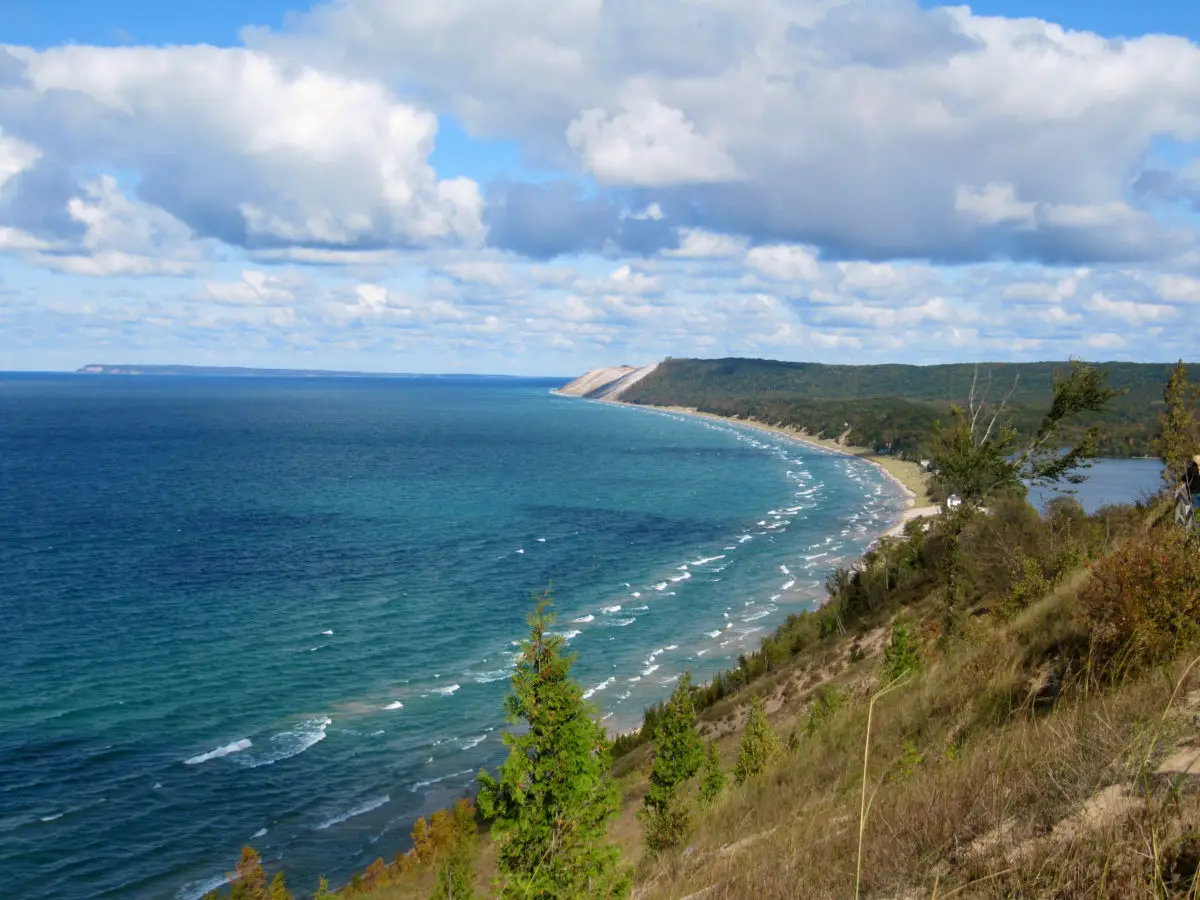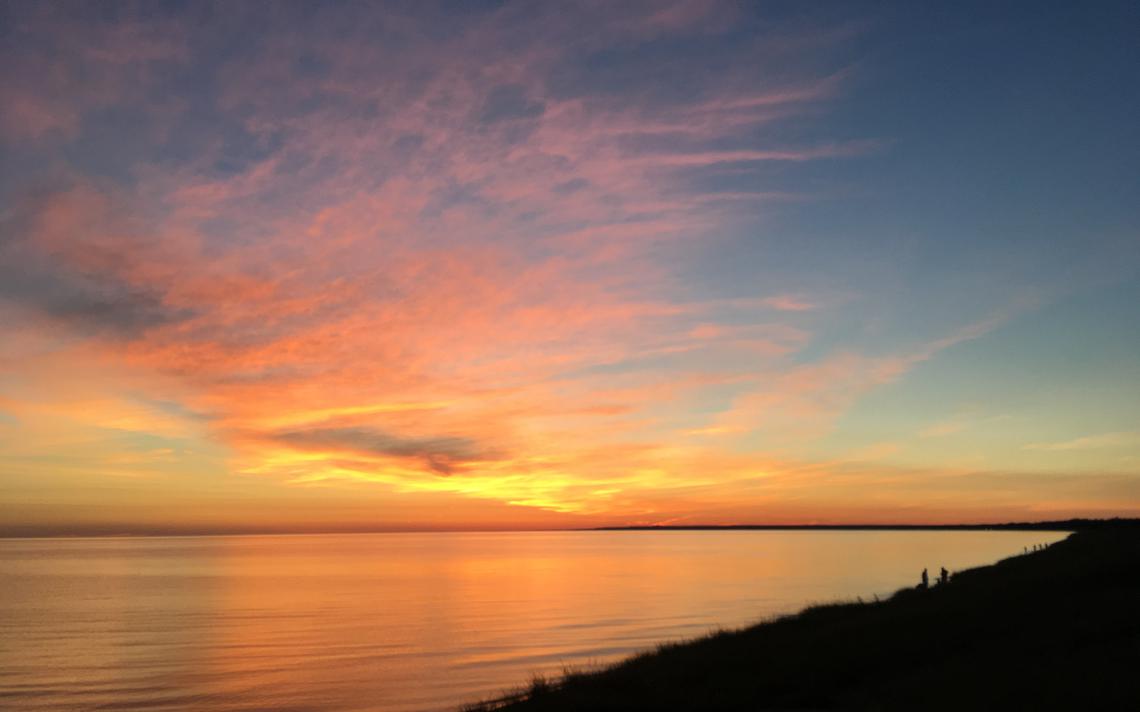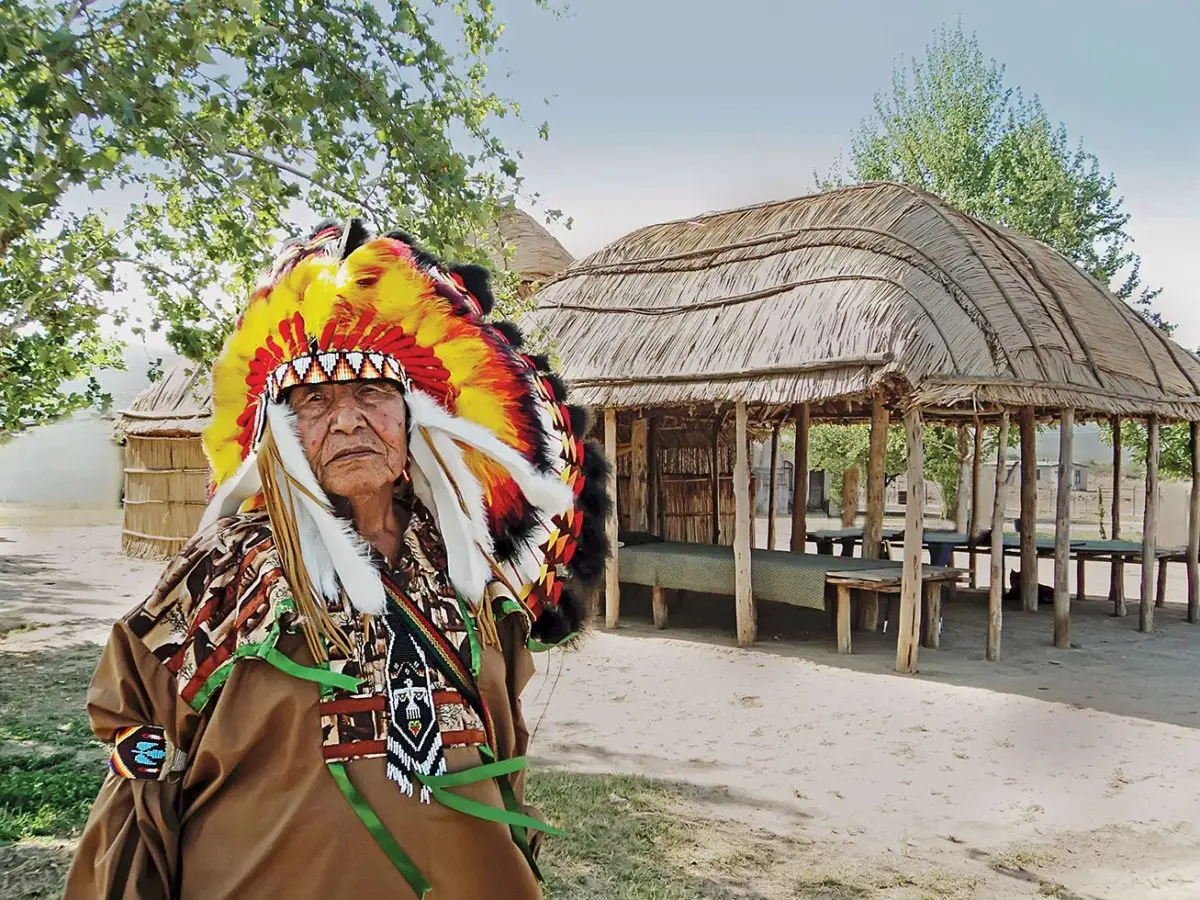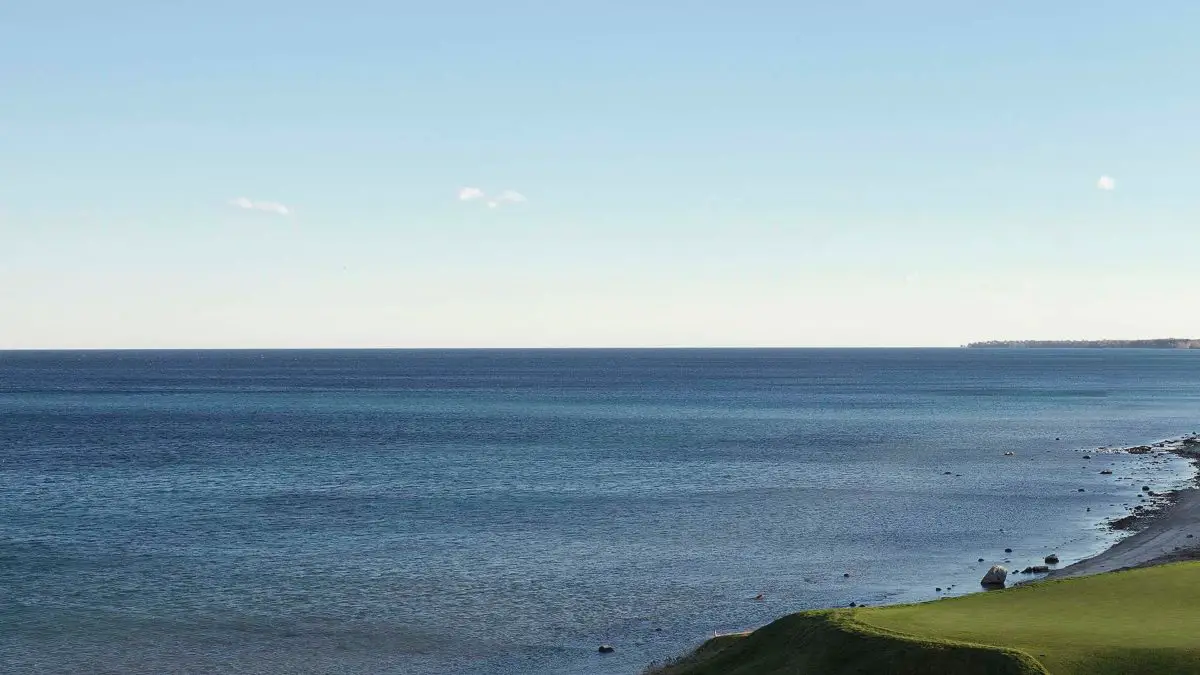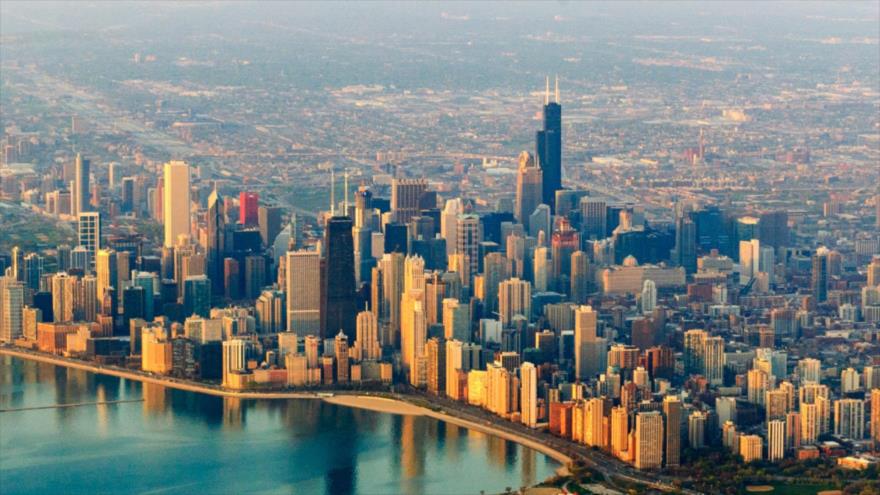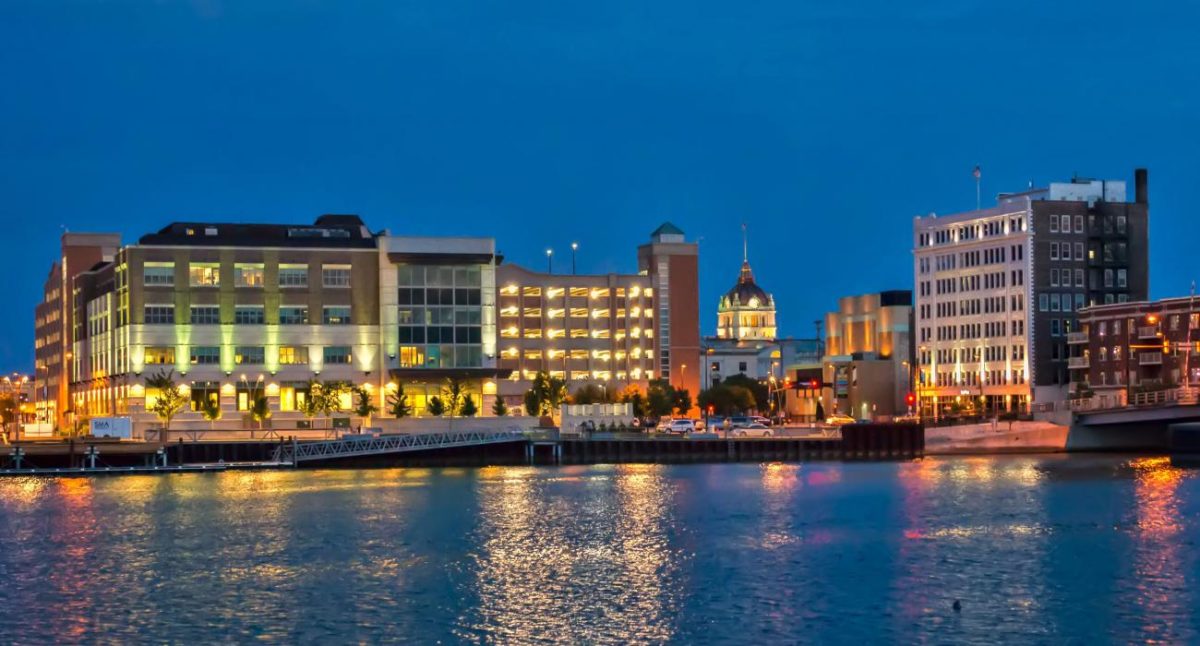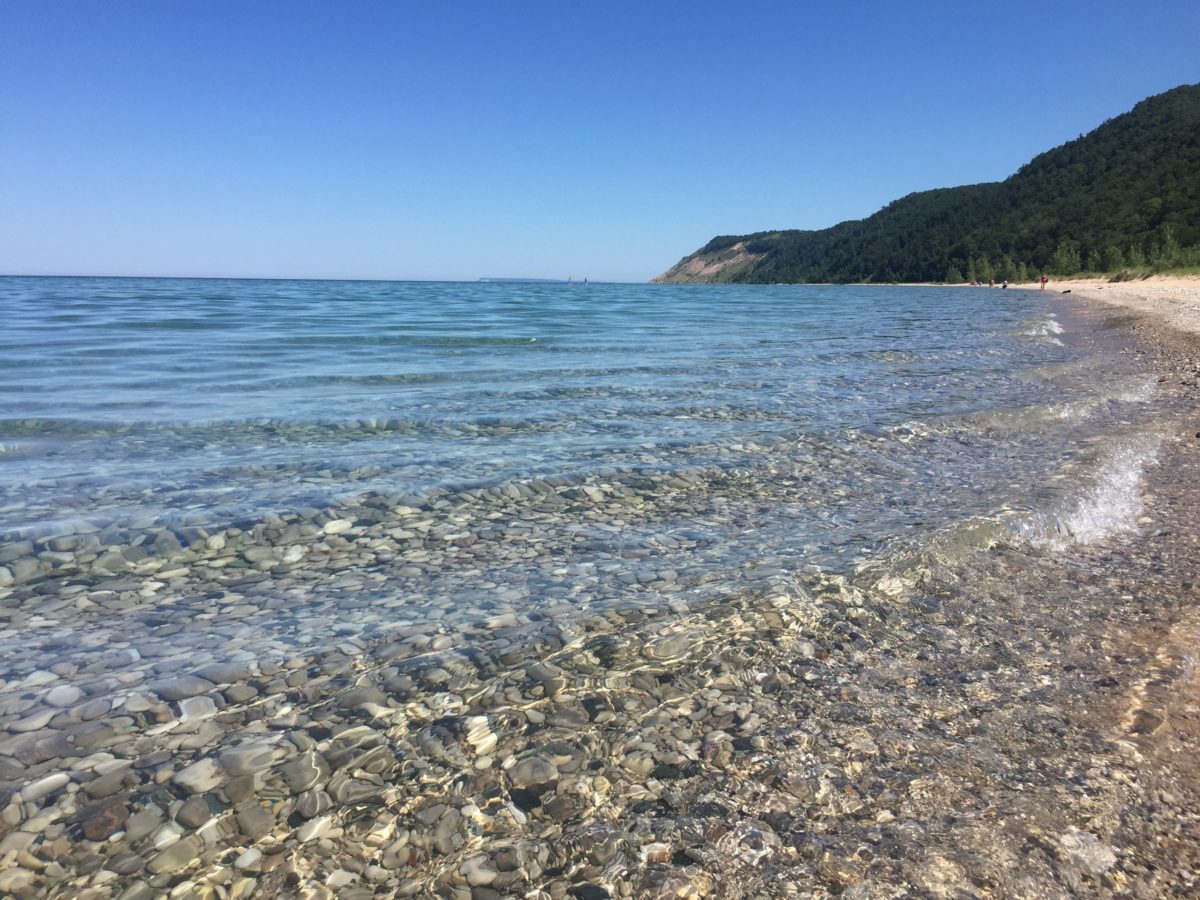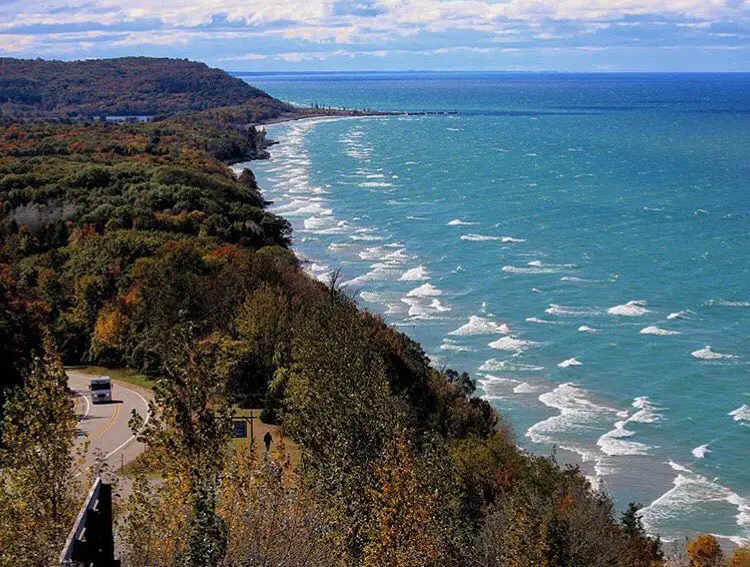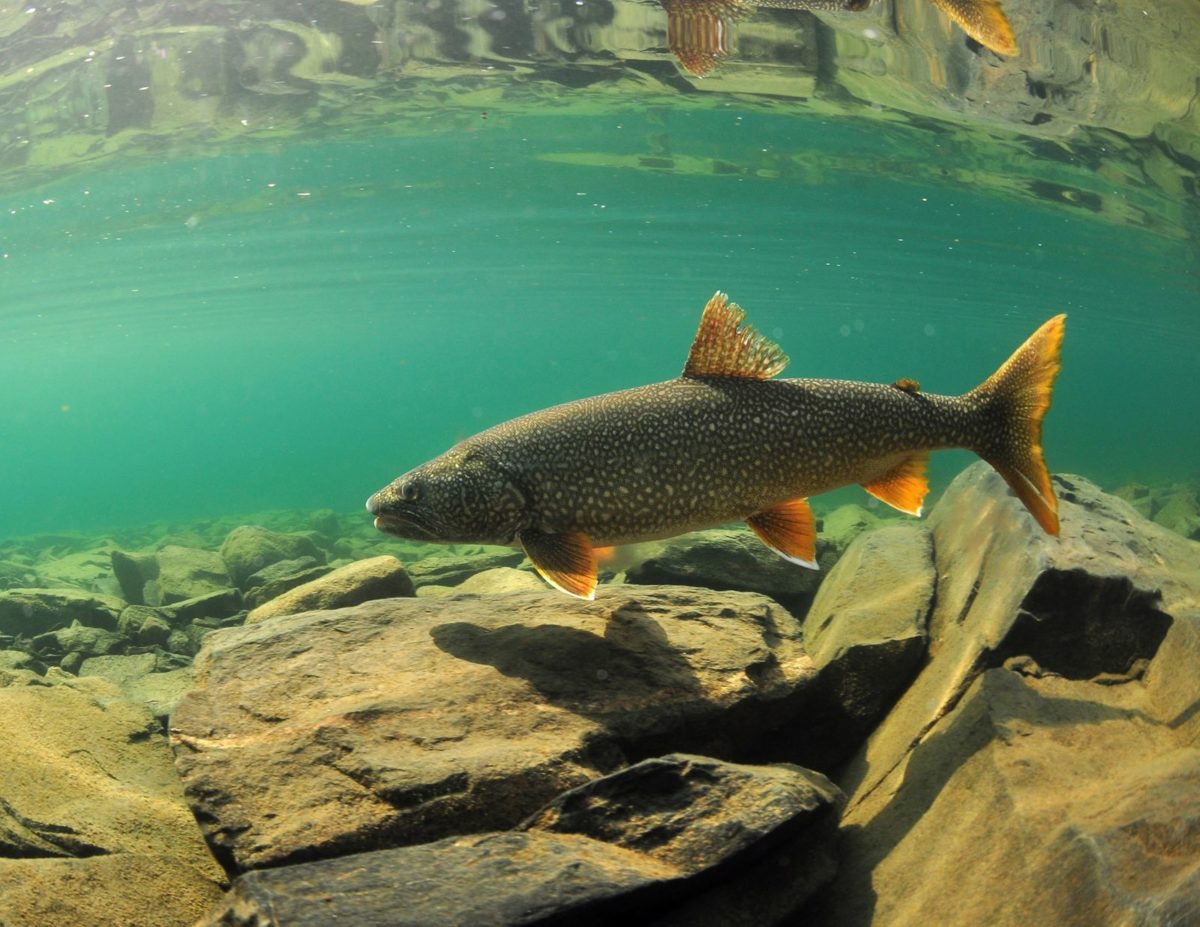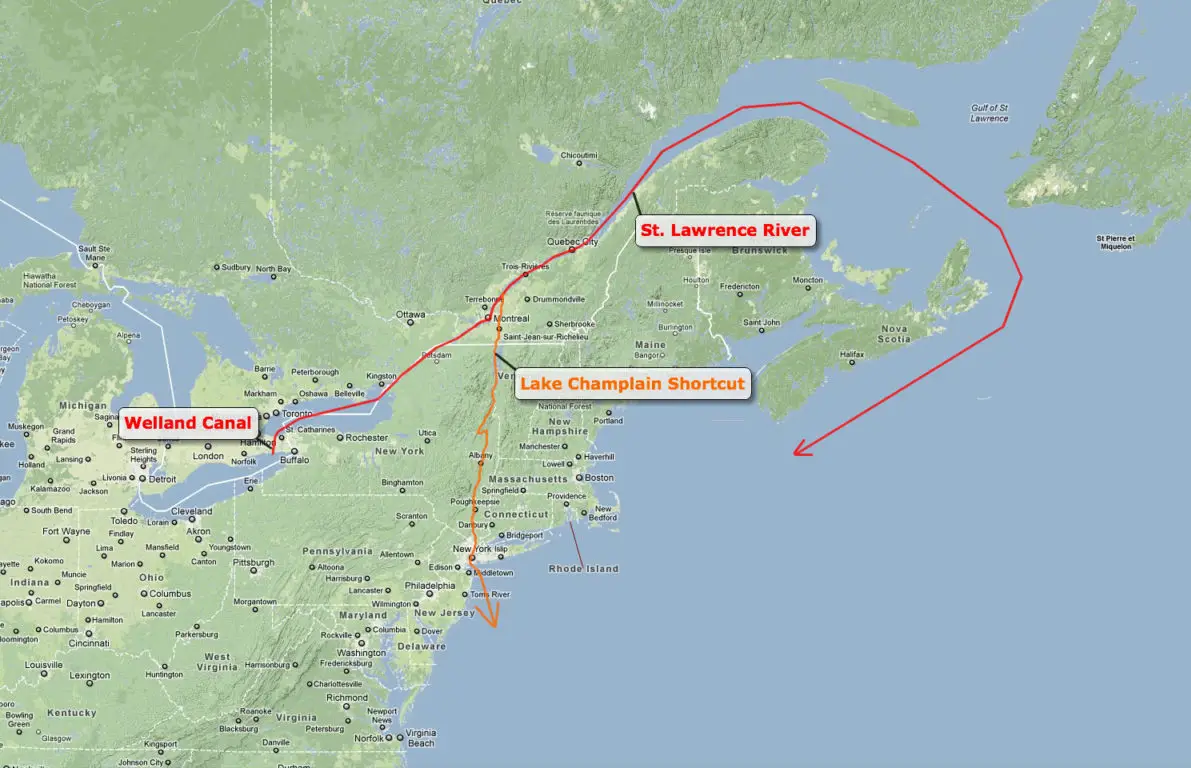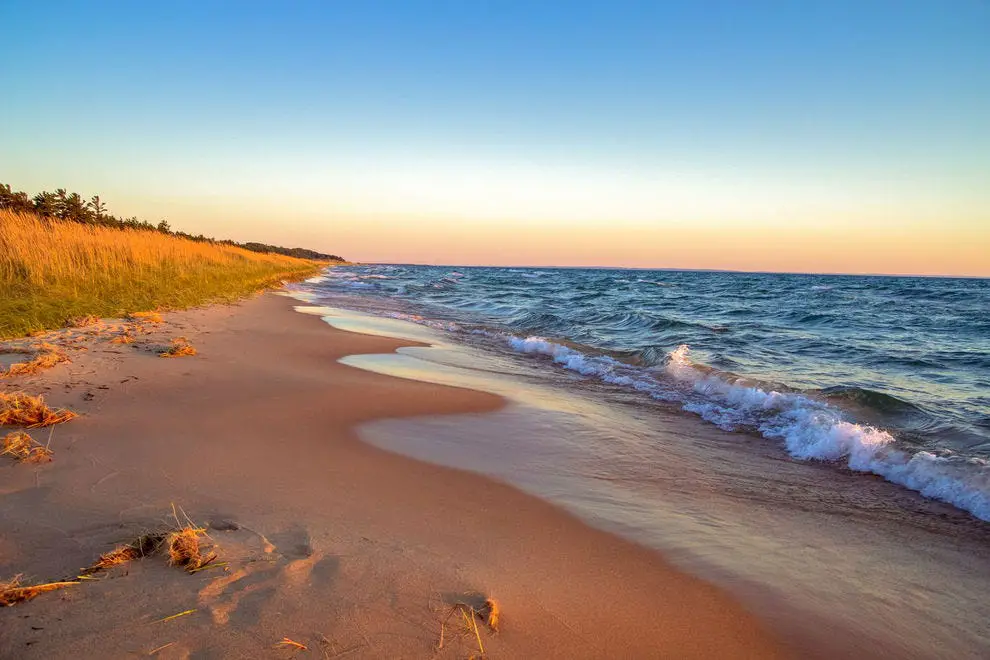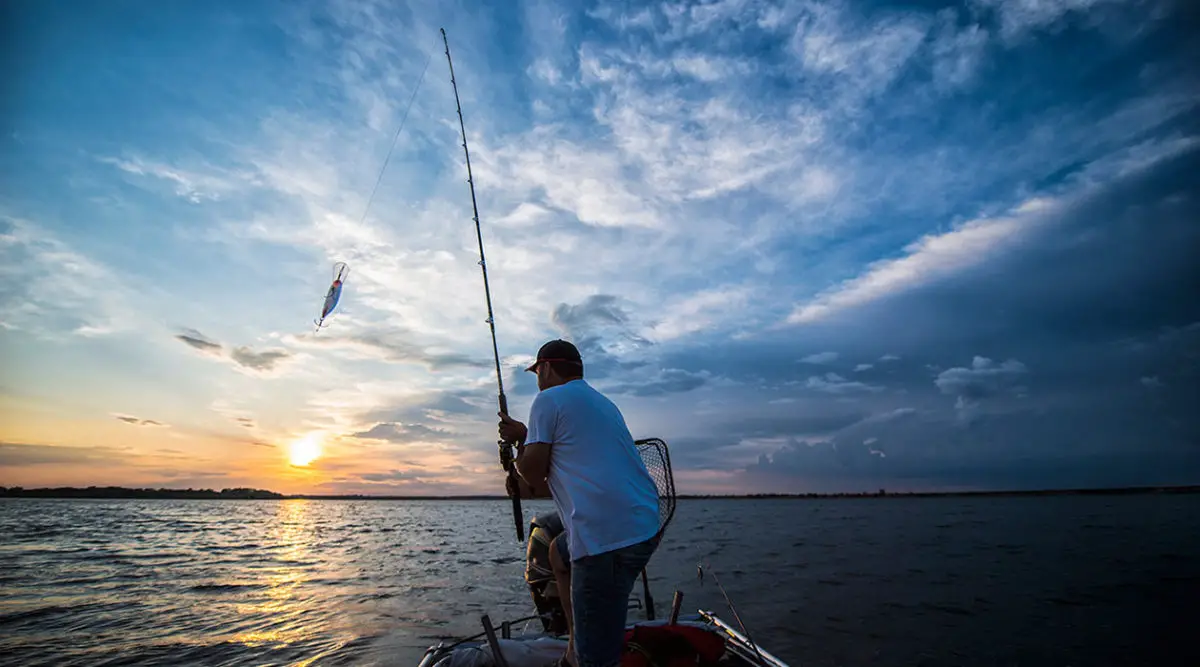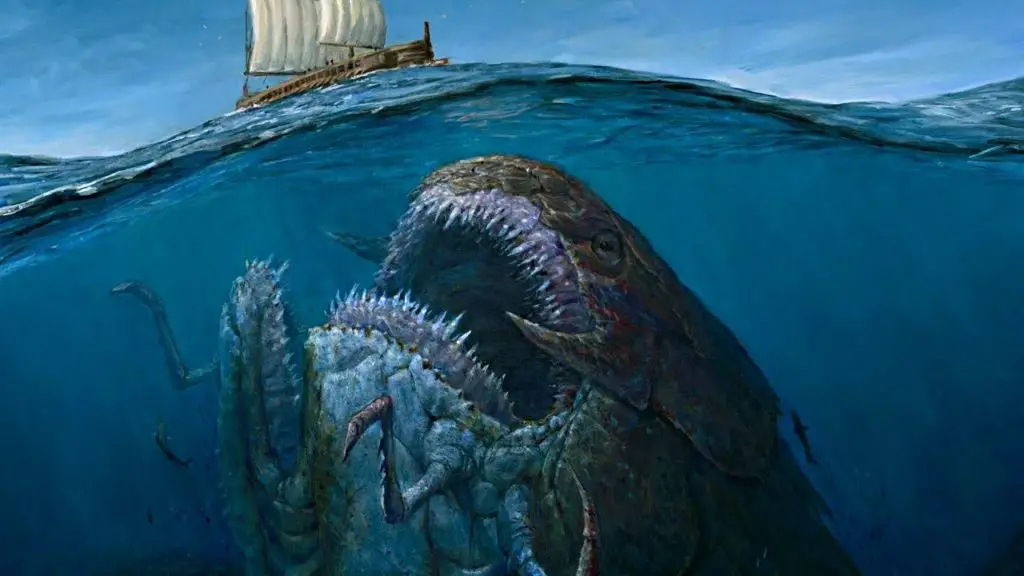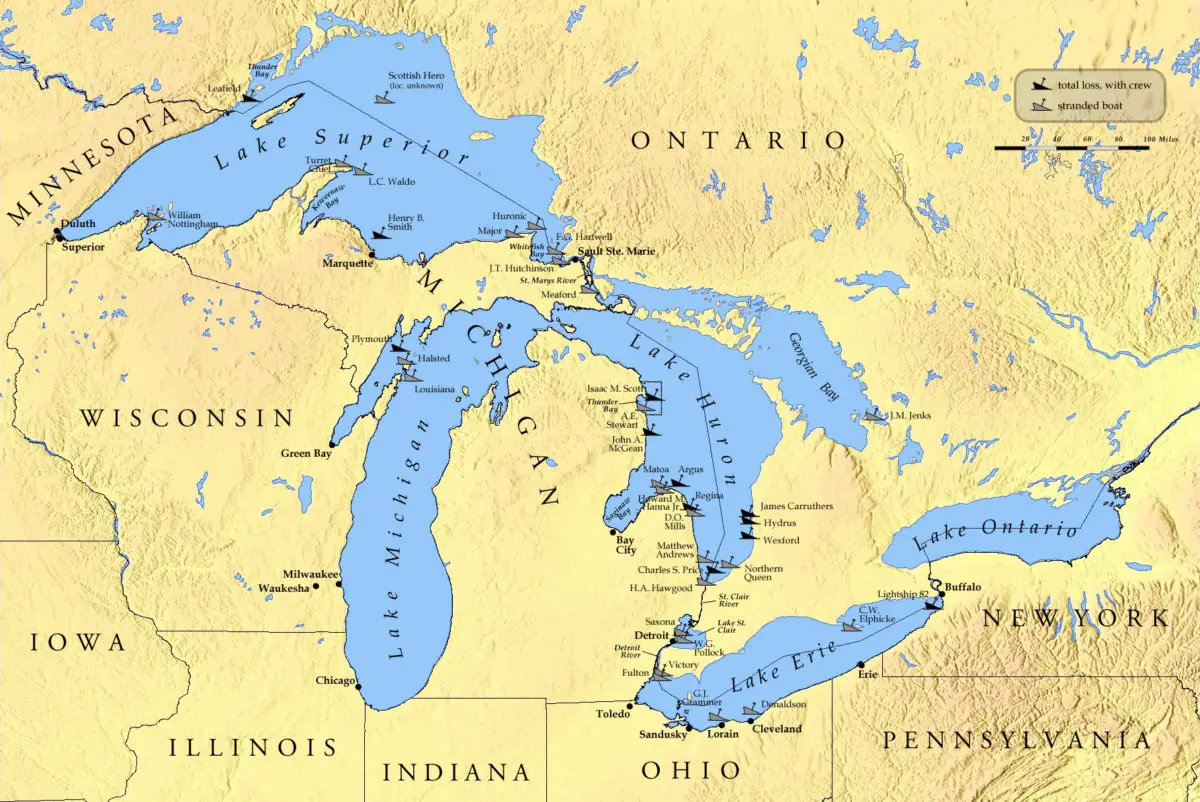Last Updated on August 29, 2023 by Hernan Gimenez
Lake Michigan is one of the five Great Lakes in North America. It is surrounded by a number of cities in the United States, one of which shares its name with this fascinating lake, and is home to more than twelve million people. We invite you to learn all about its history, characteristics, flora, fauna, geology and much more.
Indice De Contenido
Origin of Lake Michigan
Lake Michigan is one of a group of large lakes that originate on the border between the United States and Canada, but is entirely within the territory of the United States. Archaeological studies have shown that the lake was formed about 13,000 years ago, after the last Ice Age.
As the ice melted, a series of huge water-filled basins were left in its place, which, together with other liquid masses, formed this lake, as well as the other four in the group.
Lake Michigan is the second largest of the Great Lakes and is joined to Lake Huron by the Straits of Mackinac, where their waters join to form a body of water often referred to as the Michigan-Buron. It is worth noting that this strait was an important fur trade route in ancient times.
The depth of this lake was first observed during an expedition carried out in 1985 by a scientist from the University of Wisconsin, identified by the name of J. Val Klump, who was able to carry out his research using submersibles to determine its 281 metres.
History
The history of Lake Michigan is linked to the lives of its early settlers, among them the Hopewell Indians, a civilisation with egalitarian practices of government, who had sufficient resources to develop their lives in settlements where the benefits were shared by all.
However, this population dwindled over the years, and around 800 AD, the region became the home of the Silvícolas Indians, whose pre-Columbian civilisation had been present in the area for at least a hundred years and was characterised by the construction of mounds, which are elevations of land in the form of hills, often used for religious purposes or as burial sites.
When European explorers arrived at the beginning of the 17th century, they encountered several tribes that were descendants of this silvicultural culture, represented by indigenous groups such as Winnebago; Chippewa; Ottawa; Miami; Menomini; Meskwaki; Potawatomi and Sauk.
Many of these tribes traded furs across the Straits of Mackinaw, south of which are the towns of Mackinaw City, Michigan, and a French fortress known as Fort Michilimackinac, built in 1715. It is believed that the second explorer to reach the area was the Frenchman Jean Nicolet, probably between 1634 and 1638, who is credited with the discovery of the lake.
Other historical landmarks include St. Ignace, a town in Mackinac County that served as the headquarters of the French Catholic mission dedicated to caring for the Indians from 1671. The famous 1673 voyage of Jacques Marquette and Louis Jolliet in search of the source of the Mississippi River, which led to the discovery of other regions such as Lake Michigan, Green Bay and the Fox River.
The name Michigan is derived from the Ojibwe term Mishigani, meaning Great Lake, and was first settled by the French, although the city of Michigan was later ceded to Great Britain and finally became part of the United States of America in 1783, at the end of the American Revolutionary War.
The area was fully explored by the end of the 17th century and Lake Michigan was used as one of the waterways leading to rivers such as the St Lawrence, Mississippi and even the Gulf of Mexico. As a result, a number of ports were established where furs were traded between the Indians and the French, as well as many other trading communities such as Green Bay.
But Lake Michigan also played an important role in the development of other large cities in the United States, such as Chicago, as well as many others in the Midwest, as the lake was used as a means of transporting grain to feed the inhabitants of these places.
All this changed after the end of the Civil War, also known as the American Civil War of 1865, which was an armed struggle between two sides: the Confederate or Southern States, represented by Robert E. Lee, and the Northern States or Union, represented by Abraham Lincoln, who were the victors in this conflict.
All of this, together with the great expansion of rail transport, began to affect the lives of the inhabitants of the shores of Lake Michigan, who stopped giving so much importance to their lake to focus on other activities of urban expansion, giving rise to large cities and businesses throughout the territory.
Major Cities in Michigan
The development of Lake Michigan has led to a concentration of around twelve million people in the surrounding area. A number of small towns have sprung up in northern Michigan, mainly devoted to tourism and taking advantage of the beauty of the lake, which offers many opportunities for a variety of recreational activities.
Among the most important cities located on the shores of its waters, it is possible to highlight the following:
- From Illinois: Chicago, Evanston, Highland Park, North Chicago and Waukegan.
- From Indiana: East Chicago, Gary, Hammond, Michigan City, and Portage.
- From Michigan: Holland, Muskegon, St. Joseph, Benton, and Harbor.
- From Wisconsin: Green Bay, Kenosha, Manitowoc, Milwaukee, Racine, and Sheboygan.
Let’s take a look at a few examples of the types of cities that have developed along the shores of Lake Michigan.
Chicago
This is a city of almost three million people, with buildings whose architecture dates from the late 19th century, but which were considered revolutionary for the time, such as the Chamber of Commerce in the financial district, which is housed in a 45-storey building in the typical Chicago Art Deco style.
There is also Michigan Avenue, a long street that crosses the entire city from north to south, even crossing the Chicago River; this avenue is popularly known as the Magnificent Mile.
Another highlight of this great city is Millennium Park, a 93,000 square metre park with auditoriums, theatres, gardens and even an ice rink. All the dimensions of this city of skyscrapers can be appreciated on a series of boat tours on the Chicago River.
In terms of contact with Lake Michigan, the city is located on the south side of the lake, with some 47 kilometres of lakeshore, beautiful walking trails and landscaped gardens.
The city occupies a swampy region on the shores of Lake Michigan that was inhabited by the Potowatomi Indians, who called it Chegagou.
Green Bay
The city of Green Bay is part of Brown County, Wisconsin, famous for being home to the Green Bay Packers football team. It is the oldest city in the state, although not as populous as Milwaukee or Madison. It is named after the colour of the water in the bay.
The city has an area of 144.92 square kilometres, of which 18.74% is represented by water, being an extension of Lake Michigan, which is located at the mouth of the Fox River, which crosses the entire city, dividing it into two parts, connected by the presence of four bridg.
Characteristics of Lake Michigan
The characteristics presented by Lake Michigan are those that identify and differentiate it from other lakes in the world, through which we can know many of the basic aspects of this lake, which is the second in size within the group known as the Great Lakes of North America.
In this sense, it can be stated that Lake Michigan is provided with the following characteristic elements:
- It is a lake that is completely located within the territory of the United States, belonging to the Great Lakes region.
- It is surrounded by the American states of Indiana, Illinois, Wisconsin and Michigan.
- It has an area of 57,750 square kilometres, an altitude of 176 metres above sea level and a depth of 281 metres.
- It is 494 kilometres long and 190 kilometres wide.
- It has a number of inland islands, known as Beaver, North Manitou, South Manitou, Washington and Rock.
- It is fed by several rivers and is joined in its watershed by the St. Lawrence River.
- Several cities are concentrated on its banks, but the following stand out among them: Chicago, Milwaukee and Muskegon.
- The lake is used for sport and commercial fishing for trout and also for the introduction of salmon.
- It was discovered by the French explorer Jean Nicolet in 1634.
- It has beautiful beaches of soft sand and a whitish colour, with a high quartz content, which is why many have identified them as “the sands that sing”.
- Green grassy dunes and beach cherries are also present in this lake, with cool, clear waters of a pleasant temperature, even in late summer.
- Lake Michigan is home to Petoskey stones, a beautiful souvenir of the lake, which are considered its official stone and are quite decorative, resembling fossil stones with beautiful engravings, which are unique and exclusive to this region and are over three hundred and fifty years old.
Weather
This is a beautiful lake, best visited from June to September, when the weather is warm and partly cloudy, while the winters are rather cold.
Temperatures in this region generally range from -7°C to 27°C, and it is rare for there to be major changes in these values, which, if they occurred, would not reach -14°C or exceed 30°C.
But today’s reality is different, as temperatures as low as -45°C have been reported, causing the waters of Lake Michigan to freeze.
Its waters are subject to what is known as the Lake Effect: winds in winter that cause evaporation and snowfall, but also moderate temperatures in other seasons when they absorb heat and cool the air in summer and autumn. This allows for the formation of fruit belts, a time when large quantities of fruit can be harvested in the southern regions.
Flora, Fauna and Geology
The geology of Lake Michigan, like that of most lakes, is characterised by the presence of a depression in the land where the waters of various rivers are collected; along with a number of minerals such as iron, which are then transported to the coal producing area known as Appalachia.
The geological formation of the soils in this region makes them rich for food production, as they are very fertile, with large forests.
Lake Michigan is characterised by marshes and swamps, tall grasses, savannahs and high dunes, all of which provide excellent habitats for wildlife.
In this sense, its fauna is represented by fish such as trout, salmon, perch and walleye, all of which are ideal for sport fishing. There are also crayfish, sponges, lampreys, eagles and many other bird species such as swans, geese, crows, ducks, vultures, hawks and many more.
Its connection to the sea
Access to the sea from Lake Michigan is via the St Lawrence Seaway, which has a series of locks, channels and canals. It is also possible via the Great Lakes waterway, through a series of canals that have been opened to accommodate ocean-going vessels.
However, it should be noted that larger ocean-going container ships cannot pass through many of the locks created in these canals, so transit is only possible for smaller vessels.
In addition, these large lakes, such as Lake Michigan, freeze over in winter, disrupting many of these shipping routes, although icebreakers are often used.
In addition, some tourist boats enter and leave Lake Michigan via the Erie Canal, a waterway in the northern United States, or the Hudson River in New York.
Its beaches
The beaches of Lake Michigan are one of the main attractions of what some writers have called “the third coast of the United States”, after the other two, the Atlantic and the Pacific.
Its sands are striking and have the charm that comes from containing quartz, as they seem to sing with every step you take on them, they are soft and whitish in colour.
In this order of ideas, there are many beaches in the lake and all along its coast there are large dunes that decorate the whole landscape, covered with green grass, with transparent and fresh waters; something that is often taken advantage of by all its visitors during the summers when the temperature is warm.
On the western shore and at the northern end of the lake, the beaches are rocky, but to the south and east they are generally soft sand and dunes. There is also a waterfront in Chicago, parks, harbours and some development, which means that the shorelines in these areas are not protected from erosion, but generally the whole of Lake Michigan is kept in excellent condition.
Fishing
Fishing is one of the most popular activities on Lake Michigan, both commercial and recreational, due to the wide variety of fish available. However, native trout have declined due to improvements made to the Welland Canal, which have led to the invasion of sea lampreys and alewife, which are considered to be easy to reproduce and out-compete trout with their presence.
They have also been affected by changes in the ecosystem that have attracted other invasive species such as allosa, a member of the herring family. However, in order to control the overpopulation of these species, other species such as salmon have been introduced, increasing the populations of both trout and salmon.
This led to the development of sport fishing, although the lake is stocked annually with rainbow trout, chinook salmon, coho salmon and brown trout to ensure their continued reproduction and to keep invasive species under control.
Frozen Lake Michigan
Due to its geographical location in the United States and the characteristics of its climate, Lake Michigan can, under certain wind-related circumstances, experience much lower temperatures than normal during the winter, causing it to freeze.
There are periods in the winter when the lake freezes over and remains frozen for the entire season, and in the spring the entire lake is filled with thousands of pieces of ice that move with the wind.
Some global news reports commented on the fact that during the polar vortex that occurred in late 2018 and early 2019, temperatures in Michigan reached -30°C, resulting in large ice shelves forming on the lake as waves froze the entire frozen surface.
For many, this was a stunning white scene that made for beautiful postcards, but as well as being beautiful, it is also dangerous because as the ice begins to melt, it becomes unstable and if weight is placed on it, it will break.
This is because the water under the ice is strong and any false step is much more serious than people think, the ground can open up and the person can fall, risking their life if they are swept away by the currents of the lake.
Legend
Lake Michigan is surrounded by stories similar to Loch Ness in Scotland, where it is said that there is a monster with a number of prehistoric characteristics that has been seen since 1818, according to Travel & Leisure, an agency that provides tourist services for the region.
Many people believe that this type of monster, which resembles a large snake, as it has been described, is not real, since no one has ever been close to it, or at least photographed it in a verifiable way, so it is considered to be part of a legend born of the exaggerations of the inhabitants of this region with the aim of attracting tourism.
Whether you believe in the existence of a monster in Lake Michigan or not, it is an interesting place to visit and holiday in, as you can swim in its waters, enjoy a relaxing day in the wooded area or simply visit many of the interesting towns that surround it.
For snow and winter lovers, the area freezes over at this time of year, allowing for winter sports such as skiing and snowboarding.
Map of the lake
The following is a map of Lake Michigan, located in the United States, in the Great Lakes region, which lies between that North American country and Canada, surrounded by the states of Indiana, Illinois, Wisconsin and Michigan.
To conclude the subject of beautiful Lake Michigan, we invite you to visit it, either in the summer or for those who love the cold in the winter, it will be a unique experience that you will always remember.
If you liked the information in this article, we also invite you to discover more through the following links:

